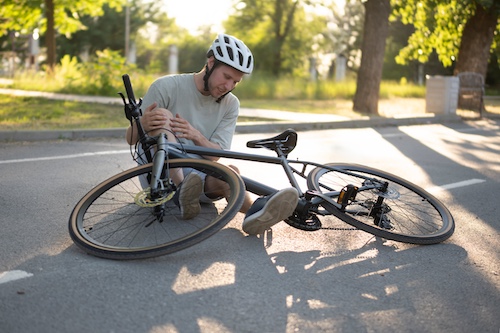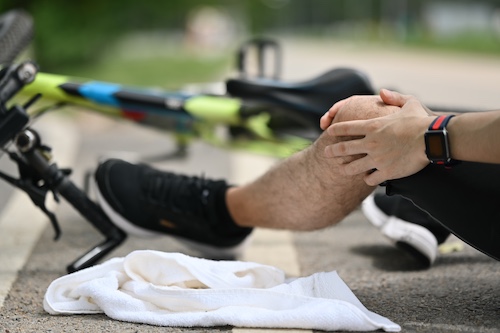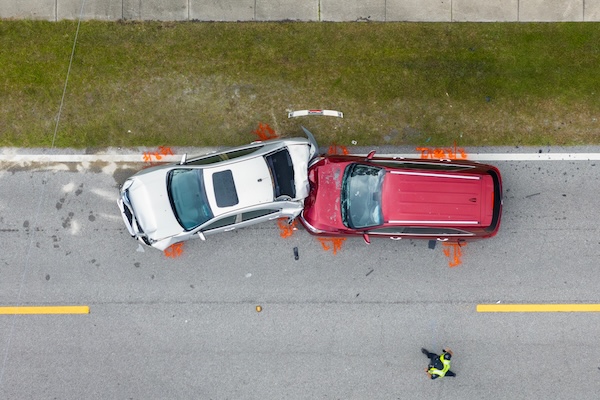Bicycle Laws You Should Know As a Knoxville Cyclist
We are Knoxville Car Accident Lawyer, a Tennessee personal injury firm that fights for people injured in bicycle, auto, motorcycle, and pedestrian accidents. We handle every case with care, build strong legal strategies, and demand fair compensation for medical bills, lost wages, pain and suffering, and other damages. We work on a contingency-fee basis, so you pay nothing unless we win. Our team offers free consultations and will guide you through each step after a bicycle accident, working to protect your rights and hold negligent drivers accountable.
Bicycling is growing in Knoxville, with more cyclists using bike lanes, bike paths, and city streets each year. To ride safely and avoid legal trouble, cyclists must understand how Tennessee bicycle laws apply to them. State law gives bicycles the same legal status as motor vehicles, which means cyclists must obey traffic signs, ride in the same direction as moving traffic, and use required equipment for visibility and safety. Knowing these rules protects bicyclists, helps motorists and cyclists safely share the roadway, and reduces the risk of bicycle accidents.
In this blog, we explain the most important Tennessee bicycle laws, highlight how they affect cyclists riding in Knoxville, and show why working with an experienced Knoxville personal injury lawyer is critical if you are involved in a bicycle accident.
Legal Status of Bicycles in Tennessee
Cyclists in Tennessee must understand their legal status to ride safely and avoid conflicts with motorists and pedestrians. The state’s bike laws clearly define bicycles as vehicles, which gives cyclists both rights and responsibilities when sharing the roadway.
Bicycles Considered Vehicles
Under Tenn. Code Ann. § 55-8-101(77), bicycles are legally considered vehicles. This classification means that cyclists riding bicycles or electric bicycles must follow the same rules that apply to other vehicles on the roadway. Cyclists have the right to use streets, highways, and bike lanes, but they must also obey traffic signs, stop signs, and red lights like motorists.
Same Rights and Same Duties
According to § 55-8-172, bicycle operators have the same rights and duties as drivers of motor vehicles. Cyclists must ride in the same direction as moving traffic and use the right-hand side of the roadway whenever possible. This law ensures that all roadway users, including bicyclists, motorists, and pedestrians, can safely share the transportation system.
Practical Impact for Cyclists
Because bicycles are treated as vehicles under Tennessee law, cyclists must give due care to other traffic, avoid hazards, and signal their intentions with proper hand signals. At the same time, motorists must recognize the equal legal status of bicycles, allowing a safe distance when passing and treating cyclists as lawful roadway users. This shared responsibility reduces bicycle accidents and strengthens roadway safety across Tennessee.
Where Cyclists Can and Cannot Ride
Tennessee bicycle laws set clear rules on where cyclists may ride to promote safety for all roadway users. Knowing these rules helps bicyclists avoid hazards and reduces conflicts with motorists and pedestrians.
Right-Hand Side of the Roadway
Under Tenn. Code Ann. § 55-8-175(a), cyclists must ride as close as practicable to the right-hand side of the roadway. Cyclists must move in the same direction as other traffic and position themselves where they can ride safely past parked cars, car doors, and other obstacles.
Bike Lanes and Bike Paths
When bike lanes or bike paths are available, cyclists should use them unless it is unsafe due to road conditions, moving traffic, or hazards. Bicycle lanes are designed to separate bicycles from motor vehicles, but cyclists still share the responsibility of signaling turns and stopping at traffic signs.
Sidewalk Riding and Local Ordinances
Sidewalk riding is restricted in certain business districts and may be regulated by local ordinance. Knoxville, for example, has limits on riding bicycles on sidewalks in areas with high pedestrian traffic. Cyclists should always check local regulations governing sidewalk use to avoid violations.
Highways and Other Restricted Areas
Cyclists are not allowed on interstate highways and other roads where bicycles are specifically prohibited. Riders should stay on streets, bike lanes, and bike paths where bicycles are permitted. Following these rules ensures bicycles remain visible to drivers and safely integrated with other vehicles on Tennessee roadways.
Passing, Overtaking, and Safe Distance Rules
Passing and overtaking are frequent points of conflict between bicyclists and motorists. Tennessee bicycle laws define how drivers and cyclists must interact to reduce bicycle accidents and keep all roadway users safe.
The Three-Foot Law
Under state law, motorists must leave at least three feet of clearance when passing a cyclist. This safe distance requirement applies on all streets and highways and is intended to prevent collisions with bicycles traveling on the right-hand side of the roadway.
Cyclists Passing Other Vehicles
Bicycle operators may pass slower vehicles when it can be done with due care and without endangering other traffic. Cyclists must ride in the same direction as moving traffic and signal when changing position to pass. This rule ensures bicycles integrate safely with cars and other vehicles on the roadway.
Car Doors and Avoiding Hazards
Cyclists must also be alert to the risk of being struck by a car door when passing parked vehicles. Riding a safe distance from parked cars helps prevent accidents and allows cyclists to avoid hazards without swerving into the path of motorists.
Shared Responsibility on the Roadway
Both drivers and cyclists must respect traffic signs, passing lanes, and the rights of other roadway users. Motorists must safely share the road by giving bicycles visible space, while cyclists must ride predictably and signal clearly. These combined responsibilities strengthen safety and reduce the likelihood of bicycle accidents in Tennessee.
Required Bicycle Equipment
Tennessee law requires bicycles to have specific equipment to improve safety, visibility, and compliance with traffic rules. Proper equipment helps bicyclists ride safely past other vehicles and reduces the risk of accidents.
Lighting and Reflectors
Under Tenn. Code Ann. § 55-9-601, bicycles must be equipped with a front lamp emitting white light visible from 500 feet and a red rear reflector visible from 500 feet. These requirements apply when riding at night or in low visibility conditions. A red rear light may be used in addition to the reflector for added safety.
Bicycle Helmet and Child Passengers
Tennessee law requires any child passenger under the age of 16 to wear a properly fitted bicycle helmet (§ 55-52-105). Children riding in a bicycle trailer or child restraining seat must also follow these safety rules. These requirements protect young passengers and reduce the risk of head injuries in bicycle accidents.
Additional Safety Equipment
While not always mandated, cyclists should equip their bikes with a bell, mirror, and properly maintained brakes to safely share the road with motorists and pedestrians. Riders of electric bicycles and traditional bicycles alike must ensure their equipment meets the state’s bike laws and allows them to remain visible to other roadway users.
Compliance and Roadway Safety
Using the required equipment makes bicycles more visible to cars and other traffic. Proper lights, reflectors, and helmets protect bicyclists and child passengers while ensuring compliance with Tennessee bicycle laws. Following these regulations governing equipment reduces risks and strengthens safety for all roadway users.
Hand Signals and Traffic Compliance
Tennessee bicycle laws require cyclists to use clear hand signals and follow traffic rules. These laws help motorists, bicyclists, and pedestrians safely share the roadway.
Required Hand Signals
Under Tenn. Code Ann. § 55-8-143, bicycle operators must use hand signals to indicate their movements. A cyclist signals a left turn by extending the left arm horizontally. A right turn can be shown by extending the right arm horizontally or by raising the left arm upward. To signal a stop or slowing, the cyclist must extend the left arm downward. These signals allow motorists and other vehicles to anticipate a cyclist’s actions.
Obeying Traffic Signs and Lights
Bicycles are considered vehicles under Tennessee law, which means cyclists must obey all traffic signs, stop signs, and red lights. A bicycle operator must come to a complete stop at a red light or stop sign and proceed only when it is safe and lawful. Ignoring these rules puts cyclists and other roadway users at risk.
Predictability and Safety
Using proper hand signals and following traffic laws allows cyclists to ride in the same direction as moving traffic while maintaining visibility. Clear communication helps avoid hazards and ensures that bicycles and motor vehicles can safely share the road. Compliance with traffic rules reduces confusion, prevents bicycle accidents, and reinforces the legal status of bicycles as vehicles in Tennessee.
Contact an Experienced Knoxville Personal Injury Attorney ASAP!
If you or a loved one has been injured in a bicycle accident, our team at Knoxville Car Accident Lawyer is ready to help. An experienced bicycle accident attorney can explain your rights, hold negligent drivers accountable, and pursue the compensation you deserve.
Contact us at 864-444-2062 for a free case consultation today!







